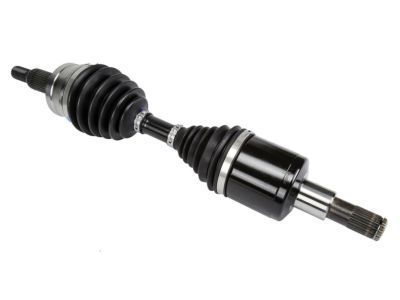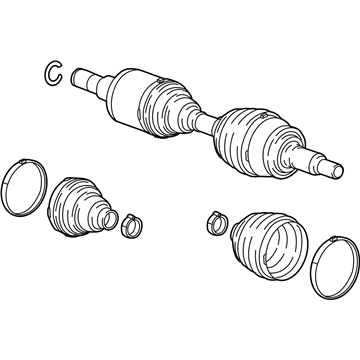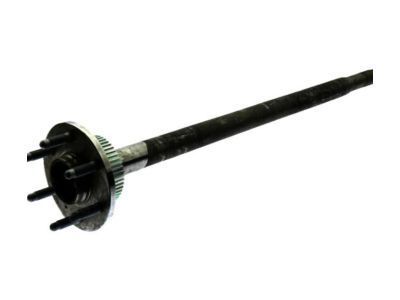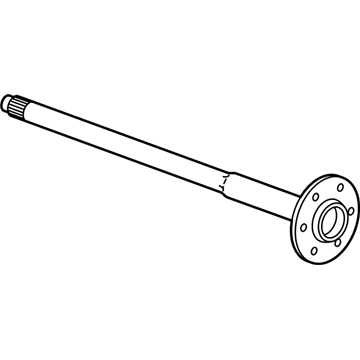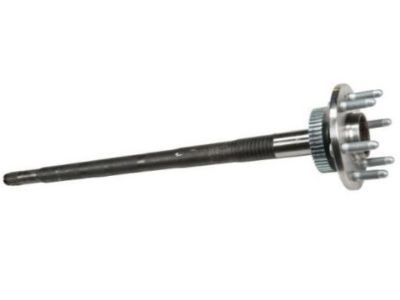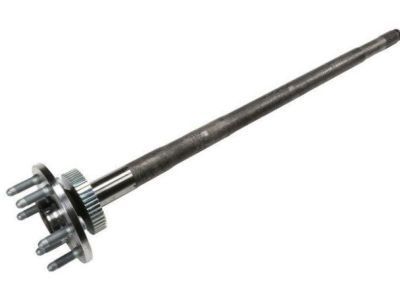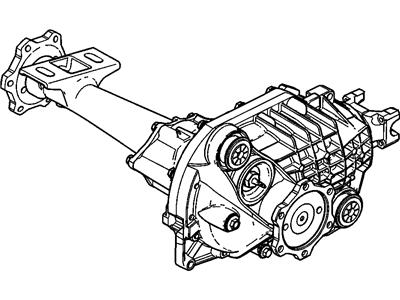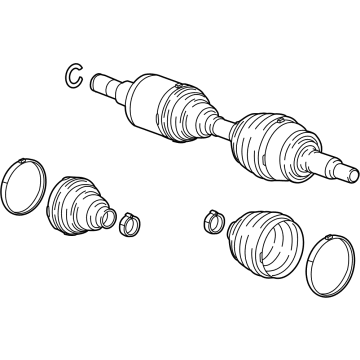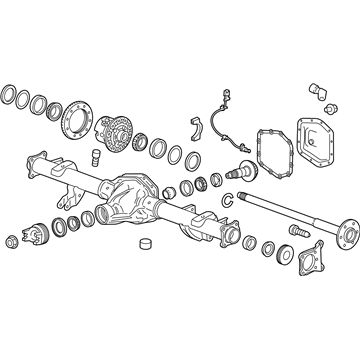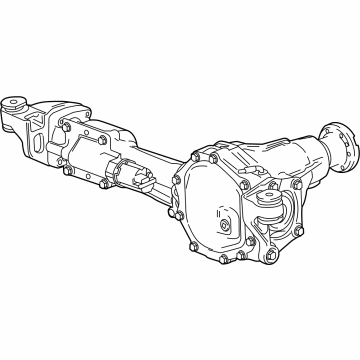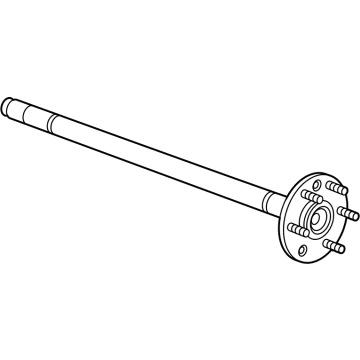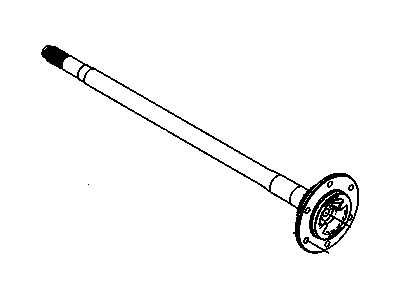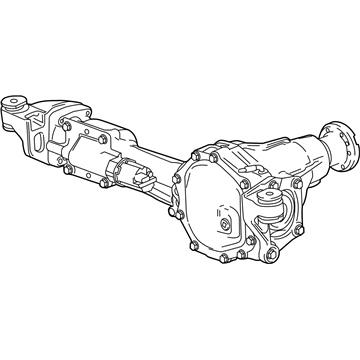
My Garage
My Account
Cart
Genuine Chevrolet Colorado Axle Shaft
Car Axle Shaft- Select Vehicle by Model
- Select Vehicle by VIN
Select Vehicle by Model
orMake
Model
Year
Select Vehicle by VIN
For the most accurate results, select vehicle by your VIN (Vehicle Identification Number).
87 Axle Shafts found
Chevrolet Colorado Front Driver Side Half, Shaft Assembly
Part Number: 84275039$173.03 MSRP: $295.88You Save: $122.85 (42%)Chevrolet Colorado Rear Axle Shaft
Part Number: 23273417$512.75 MSRP: $912.19You Save: $399.44 (44%)Chevrolet Colorado Rear Axle Shaft
Part Number: 23490377$716.11 MSRP: $965.11You Save: $249.00 (26%)Ships in 1-2 Business DaysChevrolet Colorado Rear Axle Shaft
Part Number: 23490378$693.14 MSRP: $965.10You Save: $271.96 (29%)Ships in 1-2 Business DaysChevrolet Colorado SHAFT ASM-FRT WHL DRV HALF
Part Number: 85597875$191.24 MSRP: $329.89You Save: $138.65 (43%)Chevrolet Colorado Rear Axle Shaft
Part Number: 23273416$533.68 MSRP: $920.61You Save: $386.93 (43%)Chevrolet Colorado Rear Axle Shaft
Part Number: 84401850$528.48 MSRP: $903.67You Save: $375.19 (42%)Chevrolet Colorado Front Drive Axle Clutch Shaft
Part Number: 84156082$13.30 MSRP: $22.02You Save: $8.72 (40%)Ships in 1-2 Business DaysChevrolet Colorado Front Axle Assembly (3.42 Ratio)
Part Number: 25792317$1405.53 MSRP: $2231.53You Save: $826.00 (38%)Ships in 1-3 Business DaysChevrolet Colorado SHAFT ASM-FRT WHL DRV HALF
Part Number: 84521702$154.55 MSRP: $255.80You Save: $101.25 (40%)Ships in 1-2 Business DaysChevrolet Colorado Axle Assembly, Rear
Part Number: 84177543$1962.20 MSRP: $2536.79You Save: $574.59 (23%)Ships in 1-3 Business DaysChevrolet Colorado Rear Axle Assembly
Part Number: 23234089$2692.05 MSRP: $3480.34You Save: $788.29 (23%)Ships in 1-3 Business DaysChevrolet Colorado SHAFT-FRT DRV AXLE INR
Part Number: 85579602$138.01 MSRP: $228.41You Save: $90.40 (40%)Ships in 1-3 Business DaysChevrolet Colorado AXLE ASM-FRT
Part Number: 85590234$986.77 MSRP: $1281.52You Save: $294.75 (23%)Ships in 1-2 Business DaysChevrolet Colorado SHAFT ASM-R/AXL
Part Number: 84937151$127.04 MSRP: $210.27You Save: $83.23 (40%)Ships in 1-2 Business DaysChevrolet Colorado Rear Axle Shaft
Part Number: 84401851$381.72 MSRP: $603.31You Save: $221.59 (37%)Chevrolet Colorado Axle Assembly, Front
Part Number: 84926904$1397.60 MSRP: $1806.86You Save: $409.26 (23%)Chevrolet Colorado Axle Assembly, Rear
Part Number: 84803588$2052.74 MSRP: $2654.62You Save: $601.88 (23%)Chevrolet Colorado Axle Assembly, Rear
Part Number: 84803590$2825.49 MSRP: $3653.94You Save: $828.45 (23%)
| Page 1 of 5 |Next >
1-20 of 87 Results
Chevrolet Colorado Axle Shaft
Chevrolet Colorado has a good drive train system that comprises of Axle Shafts that transmits power from the differential to the drive wheels. These shafts enable differential rotation for better grip in turns. For the vertical movements of the wheels there are joints used at the axle assembly appreciated to have CV joints if possible as this assists in suspension systems. Essential checks include lubrication and inspection of boots since they are liable to be damaged by dirt and rust. Depending on the type, there are two kinds of CV joints: ball and tripod; resilient but sensitive to dirt if not shielded. In summary, the axle shafts are critical components that bear the loads applied to the vehicle, transmit power produced by the engine to driving wheels, and helps to keep the wheels in proper position in Chevrolet Colorado trucks.
Each OEM Chevrolet Colorado Axle Shaft we offer is competitively priced and comes with the assurance of the manufacturer's warranty for the part. Furthermore, we guarantee the speedy delivery of your orders right to your doorstep. Our hassle-free return policy is also in place for your peace of mind.
Chevrolet Colorado Axle Shaft Parts Questions & Experts Answers
- Q: What is the transmission of power from the front differential/axle to the front wheels through a pair of axle shafts on Chevrolet Colorado?A:Power is transmitted from the front differential/axle to the front wheels through a pair of axle shafts. The inner end of the axle shafts are splined to the differential side gears. The outer end of each axle shaft has a stub shaft that is splined to the front hub and bearing assembly and locked in place with a large nut. The inner ends of the axle shafts are equipped with sliding constant velocity (CV) joints, which are capable of both angular and axial motion. Each inner CV joint assembly consists of a ball-and-cage type bearing and a housing in which the joint is free to slide in--and-out as the axle shaft moves up-and-down with the wheel. The outer ends of the axle shafts are also equipped with ball-and-cage type CV joints, which are capable of angular but not axial movement. Each outer CV joint consists of six caged ball bearings running between an inner race and the housing. The boots should be inspected periodically for damage and leaking lubricant. Torn CV joint boots must be replaced immediately or the joints will be damaged. If either boot of an axle shaft is damaged, that axle shaft must be removed in order to replace the boot. Should a boot be damaged, the CV joint can be disassembled and cleaned, but if any parts are damaged, the entire axle shaft assembly must be replaced as a unit. The most common symptom of worn or damaged CV joints, besides lubricant leaks, is a clicking noise in turns, a clunk when accelerating after coasting and vibration at highway speeds. To check for wear in the CV joints and axle shafts, grasp each axle (one at a time) and rotate it in both directions while holding the CV joint housings, feeling for play indicating worn splines or sloppy CV joints. Also check the axle shafts for cracks, dents and distortion.
Related Chevrolet Colorado Parts
Browse by Year
2024 Axle Shaft 2023 Axle Shaft 2022 Axle Shaft 2021 Axle Shaft 2020 Axle Shaft 2019 Axle Shaft 2018 Axle Shaft 2017 Axle Shaft 2016 Axle Shaft 2015 Axle Shaft 2012 Axle Shaft 2011 Axle Shaft 2010 Axle Shaft 2009 Axle Shaft 2008 Axle Shaft 2007 Axle Shaft 2006 Axle Shaft 2005 Axle Shaft 2004 Axle Shaft
